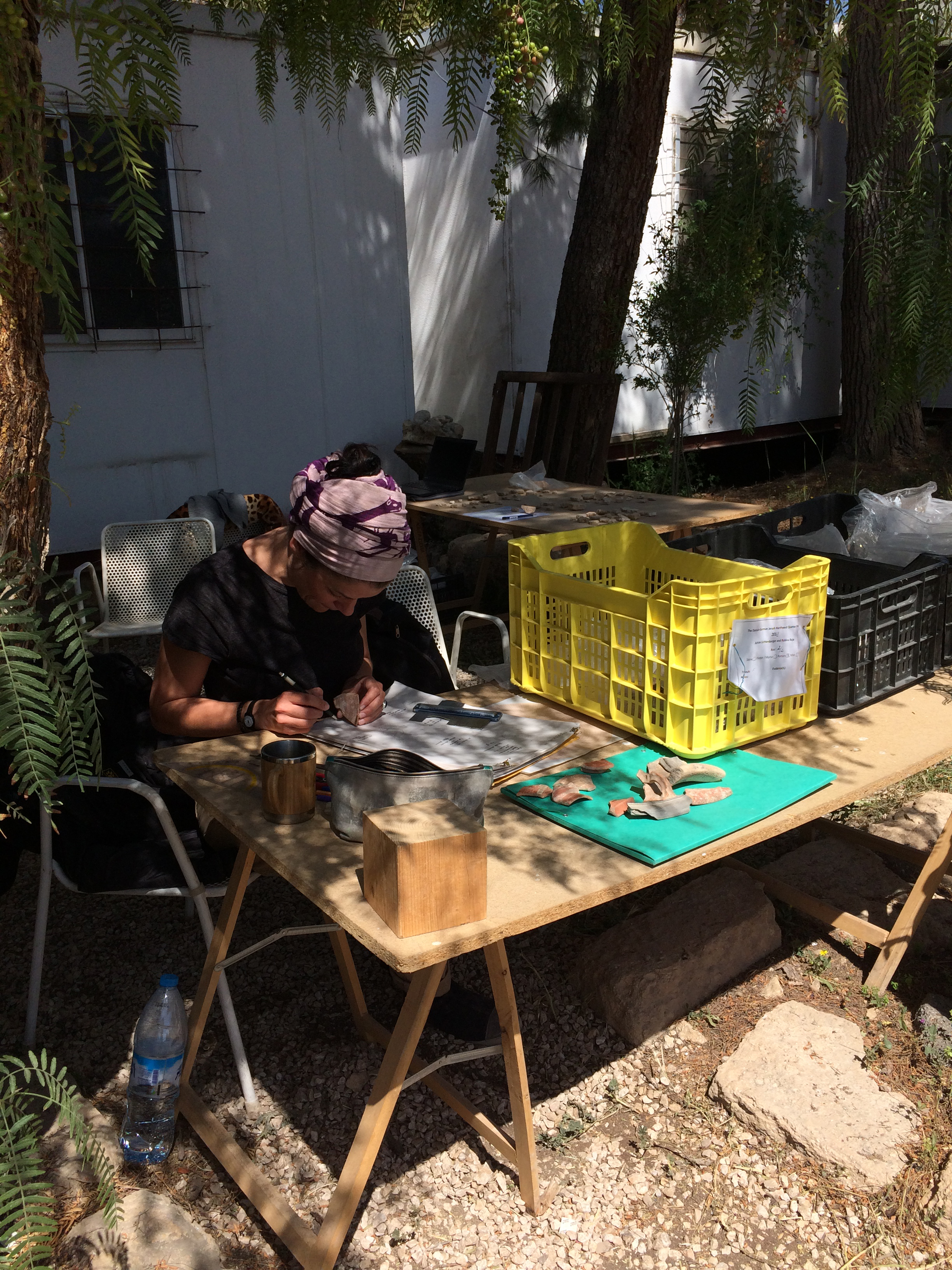Field report from Jerash
by Assistant Professor Heike Möller and PhD student Kristine Thomsen.

During the work campaign in Jerash from March to May 2017, a small team consisting of Assistant Professor Heike Möller, MA student Philip Ebeling (Westfälische Wilhelms-Universität Münster), PhD student Kristine Thomsen, Assistant Professor Thomas Birch and PhD student Alex Peterson are carrying out several different studies, which all aim to shed light on the settlement history and embedding of regional imports into network system – in particular of the Northwest Quarter in Jerash. All of the analysed and studied material groups come from the Danish-German Northwest Quarter Project’s excavations, which have been carried out from 2012–2016. The project is directed by Professor Rubina Raja (Aarhus University) and Professor Achim Lichtenberger (Westfälische Wilhelms-Universität Münster) and is funded by the Carlsberg Foundation, the Danish National Research Foundation (grant number: DNRF 119), Deutsche Forschungsgemeinschaft (DFG), H.P. Hjerl Hansens Mindefondet for Dansk Palæstinaforskning and EliteForsk (Danish Ministry of Higher Education and Science).
Philip Ebeling, who stayed in Jerash for four weeks, left Jerash last Sunday. His work was focused on the tiles found during the last campaigns in the Northwest Quarter. Since this is one of the find groups that has hardly ever been studied, his work will offer important insights into not only building techniques in Jerash but also the local tile production itself and regional exchanges of building material. His results will be groundbreaking – not only for the site itself but for the whole region. We are all very excited about his first results.
Thomas Birch will arrive in Jerash at the end of April and will be examining the metal artefacts to assess their potential for further research as well as their preservation condition. In particular, he will be focusing on the lead objects, which he will record in detail as part of the plan to investigate their origin.
Kristine Thomsen, who arrived last week, is working on collecting all empirical material from the many wall-painting and plaster contexts, which will feature in both her PhD dissertation as well as the final publications by the Danish-German Jerash Northwest Quarter Project. The preliminary results have already yielded interesting evidence of elaborately decorated houses whose walls were decorated with patterns in red, yellow, purple, green and blue colours as well as bright red-painted stucco profiles.
Alex Peterson is conducting a PhD project focusing on contextualising pottery from the Mamluk (Middle Islamic) period in a wider framework, in order to examine regional and local developments in type and decoration patterns. He has already collected much material from the Northwest Quarter excavations, which has been compiled into an extensive catalogue, and he will continue his work on the material on site in May. His work will lead to the development of a more holistic synthesis of this less well-understood period in Jerash.
Heike Möller, who is staying in Jerash for three month, and Alex Peterson are both part of the Ceramics in Context project, directed by Professor Rubina Raja and funded by the Carlsberg Foundation. The project was initiated in order to carry out contextualised analyses of pottery finds to gain a better understanding of daily life in ancient Jerash, changing dining habits etc. – thus going beyond studies of settlement development by refining typo-chronologies to obtain more accurate datings. Since Jerash was a mass-production site of pottery, at least in Roman up to Early Islamic times, one of the aims of this study season is to characterise the local production and distinguishing it from regional imports. Another focus is on understanding more about network patterns and the embedding of imported productions into exchange systems of the site, based on the finds of the Northwest Quarter. All results will be included in the final publication series of the Danish-German Jerash Northwest Quarter Project.
